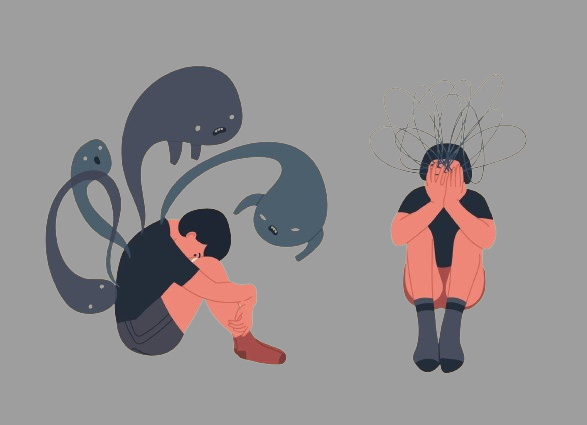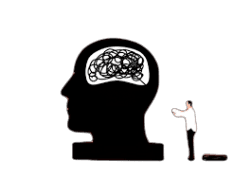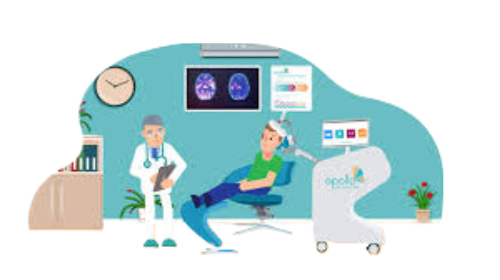Bipolar disorder is the type of mood disorder. It is characterized by alternating periods of mania(wild excitement) and depression. Mania is the type of Bipolar disorder. The cycle of bipolar disorder may be different for each person. Often times a person may first experience depression. Then depressionary be replaced with manic symptoms and the cycle between depression and mania may continue for days, or months. Between this phase of depression and mania some people return to their normal mood. Some other have several periods of either depression or mania. Still others may experience several sessions of depression with rare phase of hypomania, or repeated manic episodes with occasional depressive periods.
In this article we covered the manic phase of bipolar disorder its symptoms, Diagnosis, signs , etiology and treatment.
What is manic phase of Bipolar Disorder?
The manic phase is the the most extreme part of bipolar disorder. A person becomes euphoric, ideas come much too fast and concentration is nearly impossible. Anger, irritability, fear and a sense of being out of control are irresistible. A person’s judgement is damaged and he or she may behave recklessly without a sense of importance.
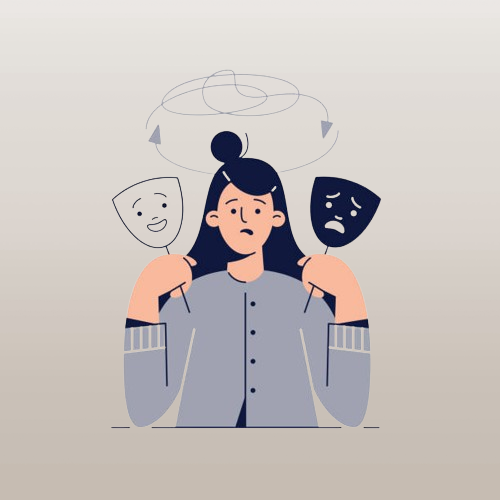
Some people lose touch with reality and experiences delusions and hallucinations. When this happens, people often need to be hospitalized for their own safety. If a person with bipolar disorder experience a severe manic episodes, he or she may be abusive to children, spouses, or engages in other violent behaviors. There may also be problem with attendance and performance at school or work, as well as significant difficulties in personal relationship.
Mania is the type of Bipolar disorder. It is sometimes called manic depressive disorder. There are periods when a person is quite normal. When a person is in the manic phase of bipolar illness over-the-top level of activity or energy, mood or behavior change. He or she will have shift usually follow a set of pattern, with mood changes occurring anywhere from once every few months to, in some rare cases, once every few hours.
Sign Of The Manic Phase of Bipolar Disorder
- Euphoria, Extreme optimism, poor judgement, Racing thought and Rapid speech.
- Aggressive, Agitated, irritated and Risky behavior.
- Feeling worthless, loss of energy, social withdrawal, Inflated self esteem, excessive worry and guilt.
- Change in sleep pattern, Heightened sex drive, Feelings of invulnerability and melancholy.
- Fatigue, sleep disturbances, suicidal thought and attempt.
- Lack of interest in previously enjoyable activities.
- Many conditions may co occur with substance abuse eating disorder, conduct disorder, attention deficit, hyperactivity disorder migraine and anxiety.
- Pressured speech the person speaks very fast, as if his or her mouth can’t keep up with the rapid thoughts. The person may be unable to respond to social cues to stop talking.
- Psychotic symptoms, Delusions (false beliefs), Hallucinations (seeing or hearing things that are not real)
- Heightened sex drive, Inability to concentrate.
- Poor performance at work place.
Diagnostic Criteria Of Manic Phase
The person who experience a current or recent episode that is manic, hypomanic, mixed or depressed. To be a manic episode, for at least one week a person ‘s mood must be out of the ordinary and continuously heightened, exaggerated, or irritable. At least three of the following symptoms have been significant and enduring. If the mood is only irritable, then symptoms are required
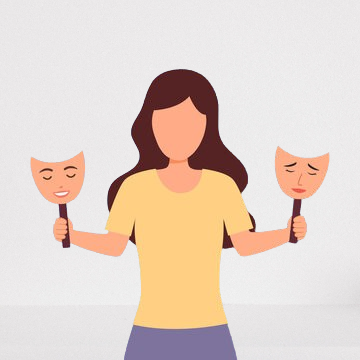
- Self esteem is excessive or grandiose ( consider herself great and superior).
- The need for sleep is greatly reduced.
- Talking much more than usual.
- Thought and ideas are continuous and without a pattern or focus.
- Easily distracted by unimportant things.
- An increase in purposeful activity or productivity or behavior and feeling agitated.
- Reckless participation in enjoyable activities that create a high risk for negative consequences (extensive spending sprees, sexual promiscuity).
The person symptoms don’t indicate a mixed episode. The person symptoms are a cause of great distress or difficulty in functioning at home, work, or other important areas. Or the symptom require the person to be hospitalized to protect the person from harming himself herself or other. Or the symptoms include psychotic features ( hallucinations, delusions).these symptoms are not caused by substance use ( alcohol, drugs, medication) or medical disorder.
Useless this is a first single manic episode there has been at least one manic, mixed, hypomanic, or depressive episode.
- A significantly reduced level of interest or pleasure in most or all activities.
- A considerable loss or gain of weight. This may also be an increase or decrease in appetite for children they may not gain an expected amount of weight.
- Feeling fatigue or diminished energy.
- Thought of worthless or extreme guilt.
- Ability to think, concentrate, or make decisions is reduced.
- Frequent thought of death or suicide.
The person symptoms don’t indicate a mixed episode. These are a cause of great distress or difficulty in functioning at home work or other important areas. These are not due to normal grief or bereavement over the death of a loved one, they continue for more than two months or they include great difficulty in functioning, frequent thoughts of worthlessness, thoughts of suicide, symptoms that are psychotic or behavior that is slowed down (psychomotor retardation).
Others signs and Symptoms
Some signs and disorders also include
- Seasonal changes in mood
- Rapid cycling
- Psychosis
- Symptoms in children and adults
Seasonal changes in mood
Seasonal changes effective disorder (SAD) people with this disorder have moods that change with the season. The seasonal mood changes peoples also become manic and hypomanic in the summer and spring then become depressed in the fall or winter. This behavior lead to bipolar manic phase. For others this cycle is reversed they become depressed in the spring or summer and manic or hypomanic in the fall or winter.
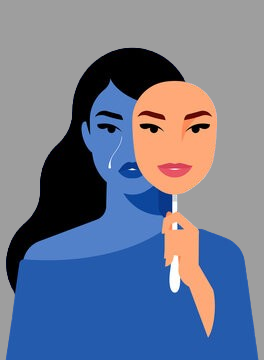
Psychosis
Mostly episodes of either mania or depression may result in psychosis a detachment from reality. Symptoms of psychosis may also include false but strongly held beliefs (delusions) and hearing or seeing things that are not there (hallucinations). In some people, sudden psychosis (a psychotic break) is the first sign of bipolar disorder. Because their symptoms are often seen same the psychosis becomes manic.
Symptoms in children and adolescents
Instead of clear cut depression and mania or hypomania the most prominent sign of bipolar disorder in children and adolescents can include explosive treatment of parents and parenting style that causes mood swings .In some cases these shifts occur within hours or less for example a child may have intense periods of giddiness and silliness, long bouts of crying and outbursts of explosives anger all in one day. Changing sleep patterns, irritable behavior are also a common indicator of Childhood mania.
Rapid cycling
Some people have rapid mood shifts. This is defined as having four or more mood swings within a single years. However, in some people moods shifts occur much more quickly, sometimes within just say days or an hour. It can be harmful for mental wellbeing and can also become manic phase.
Etiology of Manic phase of Bipolar disorder
The exact cause of bipolar disorder has not been discovered, but many experts believe that multiple factors are involved which act together to cause the disease .
- Chemical Imbalance
- Genetic component
- Medical conditions
Chemical Imbalance
Bipolar disorder may result from a chemical imbalance within the brain. The brain’ function are controlled by chemical are called neurotransmitters. It is an imbalance in the levels of one of these neurotransmitters, such as norepinephrine, may cause bipolar disorder. When levels of this chemical are too high, mania occurs. When levels of norepinephrine drop below normal levels, a person may experience depression. Levels of other neurotransmitters, such as serotonin and dopamine are also believed to play a role.
Genetic component
There is a significant genetic component to bipolar disorder. If a family member has bipolar disorder, other family members may be at risk. The identical twin of a person with bipolar disorder is at the highest risk for developing the condition. However, stress of some kind often is needed to trigger the onset of the disease. The disease is likely a combination of multiple genetic and environmental factors.
Sometime a period of emotional stress, drug use an illness or another event seems to trigger the onset of the disease. Stresses can also trigger the onset of the disease. Stresses can also trigger a manic or depressive episode in people who are known to have the condition.
Medical Conditions
Not everyone with severe mood swings or a change in personality has bipolar disorder. Mood swings can be caused by other medical conditions that need to be diagnosed and treated properly. Medical disease and medications that may have symptoms similar to manic phase of bipolar disorder
- Head trauma (blood clots or bleeding in the brain).
- Thyroid problem (both underactive and overactive).
- Systematic lupus erythematous (a condition that may affect various body, organs, including the brain)
- Brain tumor
- Epilepsy ( seizures)
- Neurosyphilis ( a form of the sexually transmitted disease, syphilis, that has gone to the brain because it went untreated to long.
- AIDS(acquired immunodeficiency syndrome, the ultimate result of infection with the human immunodeficiency virus and HIV).
- Sodium imbalance (sodium, one of the several elements found in body cells that is necessary for their proper function).
- Diabetes mellitus ( a disorder, of among other things sugar processing in the body).
- Certain medications that decrease the amount of serotonin or norepinephrine, such as some antihypertensive drugs and some preparation of steroids and birth control pills.
Treatment of Bipolar 1 Disorder
Bipolar disorders of manic phase cannot treated permanently but with proper therapy, people with this disease can lead stable and productive lives. Bipolar disorder will not get better without medical treatment.
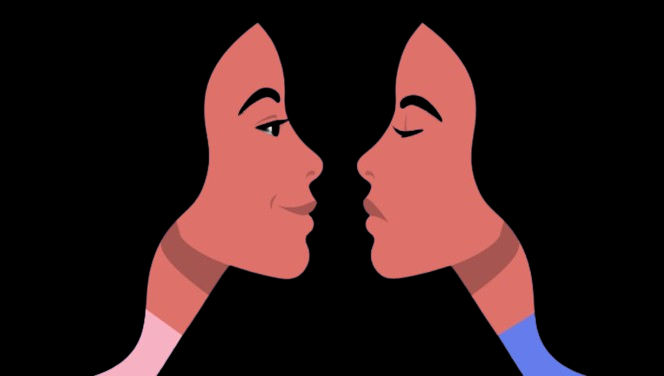
Psychotherapy
Psychotherapy have many techniques. In this his the mental professional help to talk and know the individual depression. Many factors are used to treat the mania. The patient condition are used be taken in under consideration. Psychotherapy is also called a talkative therapy.
Medical treatment
Treatment of bipolar disorder center on
- Medication to stabilize mood swings
- Counseling with a therapy
However therapy is more successful with strong support from family and loved ones. Medication do not always work the first time and may need to be changed many times until the right medication or combination of medicines is found.
- While this change is happening people with bipolar disorder need to feel that they can count on their friends and family not to give up on them and to bear with them even though their mood swings are causing grief and pain.
- Periods of stress may throw people with bipolar disorder into one of the extreme of mania or depression and they meet from support system to have them deal with the disease.
- Those people who are our danger to themselves or others will have their medication started in the hospital and will remain their until they are able to control their emotions enough to function at home.
- Psychiatric hospitalization protect the safety of the person with bipolar disorder and love one
- Medical staff can we meet affect of medications when a person is in the hospital.
- Medication can be adjusted more quickly in the hospital then over a serious out patient visit
- Group Therapy or one on one session with a psychiatrist also start while in the hospital.
- Not all episodes are serious enough to require hospitalization many people can be treated as out patient.
Conclusion
Mania is the type of Bipolar disorder. That effect the individual well being or mental health serious. The person are unable to control their emotions and himself. In this condition the mood shifts are so fast and quick. The person who is effective can be treated by using different therapy and medication. But they help to control only it can’t be treated permanently. Mania is the condition in which individual though pattern and thinking become negative her perception also be affected about other peoples and also for love ones.
FAQ,s
What is the manic episode like?
The individual mood shifts become fast having abnormally high level of energy and activity. Sleep disturbances. Become happy and sad also cry .
Is mania bad thing?
Mania have serious effects on individual ability and mental wellbeing. Mania is become serious in several conditions the individual have to hospitalized for treatment and medication.
What is main symptoms of mania?
Sleep disturbances
Loss of interest in daily activities
Fatigue
Social withdrawal

